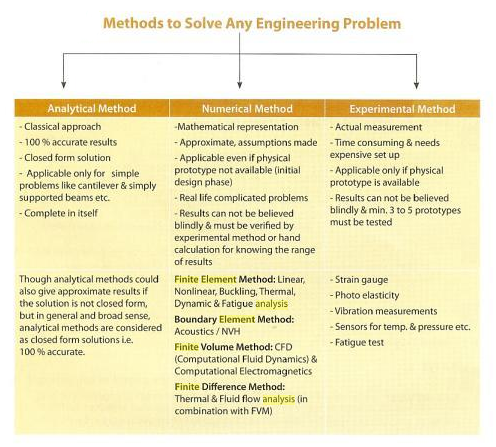Now, the small parts called elements can be in large amounts, resulting in large calculations to be made and we use computer softwares to make large calculations easy. I will soon update you with my new blog about FEA Analysis, as soon I make it.
Hi! I am Amritpal, I share here, with you, the different mechanical products, Industrial cases, and some tutorials. These are mean to promote mechanical studies around the world.You can ask questions, related to stuff below, by sending me e-mails to metalsonic@live.com.
Monday, 17 February 2014
FEA Analysis (Using Hyperworks and Ansys)
To analyse, the maximum stress and strain, a machine or machine components can face, it become very hard to make calculations by conventional formulas, of stress and strain, while making calculations for complex geometrical shapes, made up different materials, complex loading varying with time etc. For example, to calculate the stress at any point of engine body, it would take months to make calculations by using various formulas. Now, that technique is called scientific approach toward the problem, also called Analytical Method. In the beginning of 20th century, mathematicians developed various Numerical Methods, which make problem solving faster, though gives you a solution correct upto about 90%, unlike Analytical methods which gives a 100% correct solution. In the Industry, time is a very important aspect in the development of project or product. Now for example, To develop a product, in least time, Analytical methods would make calculations very long, and thus would make it hard to achieve goals in time. Thus for that purpose, Industry uses Numerical methods to make calculation of various forces while developing a product, which are fast, even though they are not as much accurate as analytical methods, as Industry can compromise a accuracy of about 10% before time. The product is made by approximations, and assumptions, and the results achieved by numerical methods can not be trusted blindly, and thus, they make prototypes and test experimentally, by experimental methods in the company's protoshops. If prototype passes,the product drawings are finalized and are released. The various methods and various Numerical methods, which are of our main concern, are discussed below briefly.
I have been providing, random mechanical studies. I have decided to make a new blog about FEA Analysis, in which I will give complete knowledge about the subject of Strength of Materials, Finite element methods, and use of software to make calculations even more faster, by Hypermesh and Ansys. The Finite element method, in Numerical methods, solves a problem, lets say a stress analysis on big sheet metal surface, by dividing the sheet metal part into many small parts, in the form of quads and trias, made of nodes, and those small parts are called elements. By dividing into small parts by a process called meshing, the stresses in each elements are calculated, and are added up to achieve the final solution.
Now, the small parts called elements can be in large amounts, resulting in large calculations to be made and we use computer softwares to make large calculations easy. I will soon update you with my new blog about FEA Analysis, as soon I make it.
Now, the small parts called elements can be in large amounts, resulting in large calculations to be made and we use computer softwares to make large calculations easy. I will soon update you with my new blog about FEA Analysis, as soon I make it.
Subscribe to:
Post Comments (Atom)



No comments:
Post a Comment